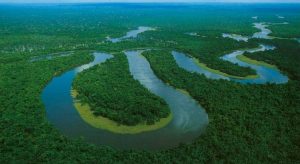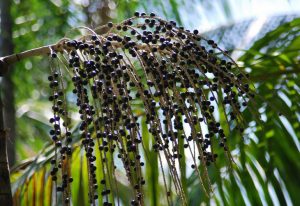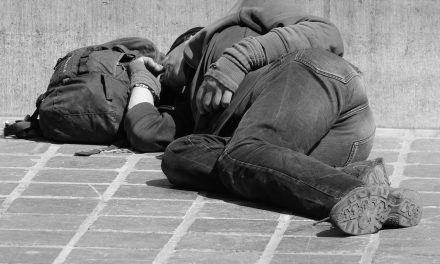 The Amazon is the largest humid tropical forest on the planet, around 5.5 million km², with roughly 3.3 million km² located in Brazilian territory. The remainder is divided between Guyana French, Surinam, Guyana, Venezuela, Colombia, Ecuador, Peru and Bolivia. However, with each passing day this ecological heritage increasingly faces the threat of extinction. The index of deforestation in the Amazon reached 26.130 km² between 2003 and 2004, the second largest rate since 1995, when the record 29.059 km² of area cleared was recorded. Now, the largest tropical forest on the planet is more threatened than ever.
The Amazon is the largest humid tropical forest on the planet, around 5.5 million km², with roughly 3.3 million km² located in Brazilian territory. The remainder is divided between Guyana French, Surinam, Guyana, Venezuela, Colombia, Ecuador, Peru and Bolivia. However, with each passing day this ecological heritage increasingly faces the threat of extinction. The index of deforestation in the Amazon reached 26.130 km² between 2003 and 2004, the second largest rate since 1995, when the record 29.059 km² of area cleared was recorded. Now, the largest tropical forest on the planet is more threatened than ever.
This problem concerns the entire planet. The Amazon is one of the largest regions of biodiversity on the planet with an impressive quantity of animal species and vegetables, and its devastation brings grave consequences. The destruction of the forest has a direct impact on medicinal and genetic researches. Also, Brazil is responsible for approximately 2.51% of all the carbon dioxide emissions in the world (not including the percentage of burned acreage) and climatic changes. The latest research indicates that there exist around 2.5 thousand species of trees, of which more than 500 thousand are knocked down each year.
If this pace keeps up, part of the Brazilian forest runs the potential risk of disappearing soon, and the risk of extinction is clear, which can not only significantly compromise the scientific and medicinal development of the planet, but can also present severe health problems for our plant’s inhabitants. In the last several years the Brazilian Government, through joint actions of the Department of the Environment, the Polices Federal, the Department of Labor and the Army, has been trying to preserve the Amazon aiming directly at a more sustainable and less aggressive model for the development of the region. However, despite these efforts, deforestation in the region still has not been obtained. The greediness of man and of the big corporations, and the absence of ecological conscience, are by far the largest problems the Amazon faces.
There are three kinds of Amazonian forest: dry land, igapó and meadow. The forests of dry land possess the high trees where some species of animals can climb 65m. The leaves of the trees stop the entrance of sunlight into the interior of the forest leaving it humid and without ventilation. In the Castanheirado- Pará, the caucho (latex) and the guarana are its most common species. In the shorter land – the central Amazon Basin, is the forest of igapó. This forest is formed by low, dense vegetation and by an aquatic plant known as Victoria Regia. The meadow forest is a kind of transition between the two first, whose composition varies according to the proximity of the rivers. Here you can find the rubber tree, the palm tree and the valuable Jatobá, between other large-scale trees.
Vegetables are the main economic activity, and also the main focus of dispute between natives, government, and international and national industries. The Institute Osvaldo Cross and the Company of Technological Development (Codetec) are studying the 264 species of interest for industry in order to create a plan of rational exploitation that does not provoke extinction, yet will allow for the growth of the economy of the region in a sustainable manner.
Why Protect This Ecological Heritage?
The Amazon Forest has an important and integral role related to our quality of life and the health of the planet. The deforestation results in soil loss, floods, droughts, loss of rich and bountiful habitats and severe climatic changes. The destruction of our tropical rainforest destroys one of the greatest store-houses of genetic diversity on Earth.
Important Role
 The beginnings of change started years ago and have recently increased with the 2006 documentary An Inconvenient Truth by Al Gore. However, there is much more work that needs to be done to redirect the global economic system away from environmentally and socially destructive activities and into clean, sustainable development and socially just alternatives. Thanks to the involvement of nonprofit organizations like Greenpeace International – www.greepeace.com, Amazon Watch – www.amazonwatch.org, Pro-Natura Brasil – www.pronatura.org.br and Earth Council Alliance – www.earthcouncilalliance.org (just to mention a few), and big American corporations like Citigroup and Goldman Sachs, policies have been adopted that safeguard old growth and endangered forest and curb investment and climate changes. American/ Brazilian companies like Sambazon – www.sambazon.com and One World Enterprise – www.onenaturalexperience.com (Açaí and Coconut Water exporters respectively) using superior sustainable development business model, and many others that help our planet should have our support.
The beginnings of change started years ago and have recently increased with the 2006 documentary An Inconvenient Truth by Al Gore. However, there is much more work that needs to be done to redirect the global economic system away from environmentally and socially destructive activities and into clean, sustainable development and socially just alternatives. Thanks to the involvement of nonprofit organizations like Greenpeace International – www.greepeace.com, Amazon Watch – www.amazonwatch.org, Pro-Natura Brasil – www.pronatura.org.br and Earth Council Alliance – www.earthcouncilalliance.org (just to mention a few), and big American corporations like Citigroup and Goldman Sachs, policies have been adopted that safeguard old growth and endangered forest and curb investment and climate changes. American/ Brazilian companies like Sambazon – www.sambazon.com and One World Enterprise – www.onenaturalexperience.com (Açaí and Coconut Water exporters respectively) using superior sustainable development business model, and many others that help our planet should have our support.
What We Can Do?
Like we said above, we can at least support these companies and green organizations by visiting their websites, buying their products and services, and reading eco-news to get updates with the new facts about this important theme. Our planet deserves our attention!












